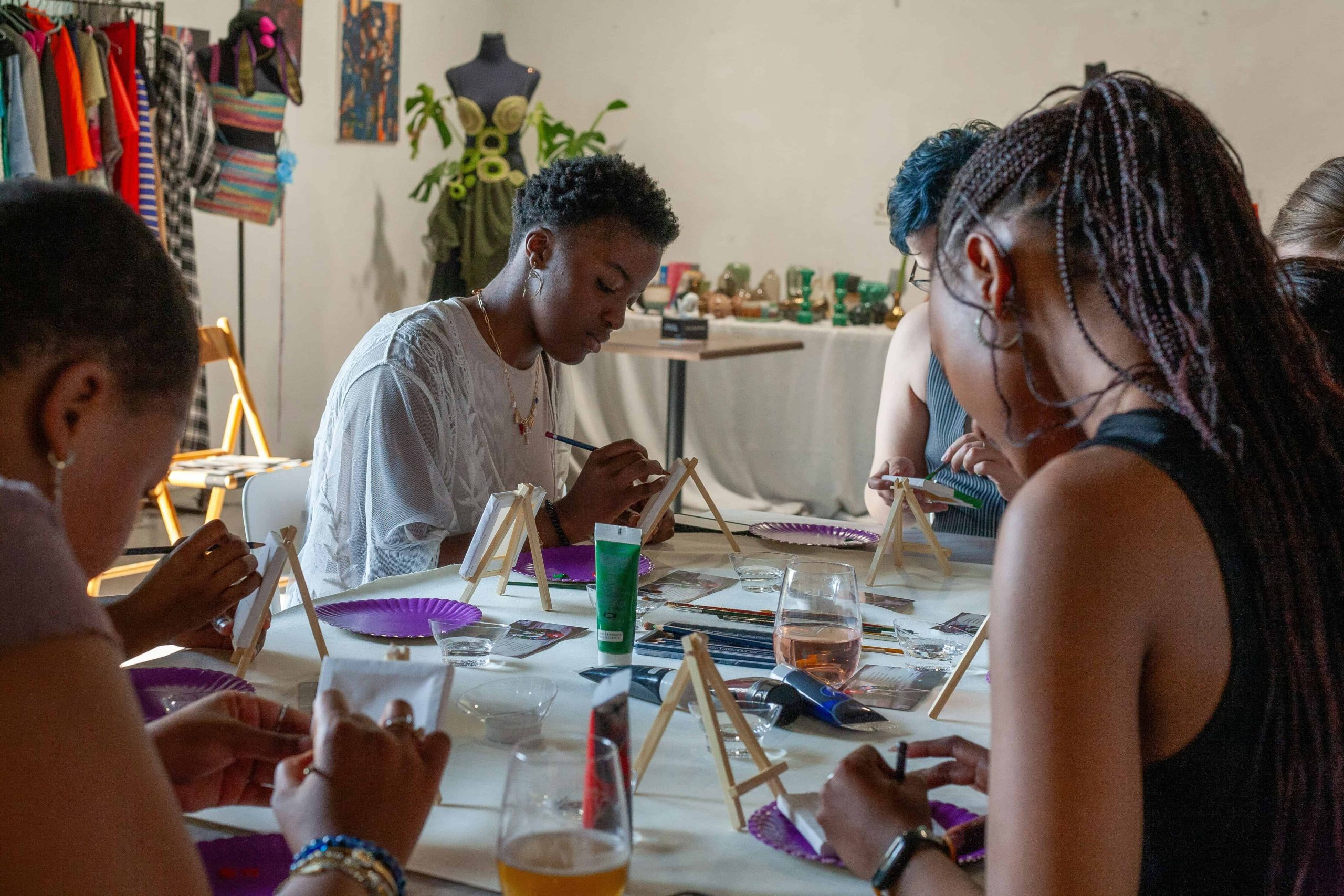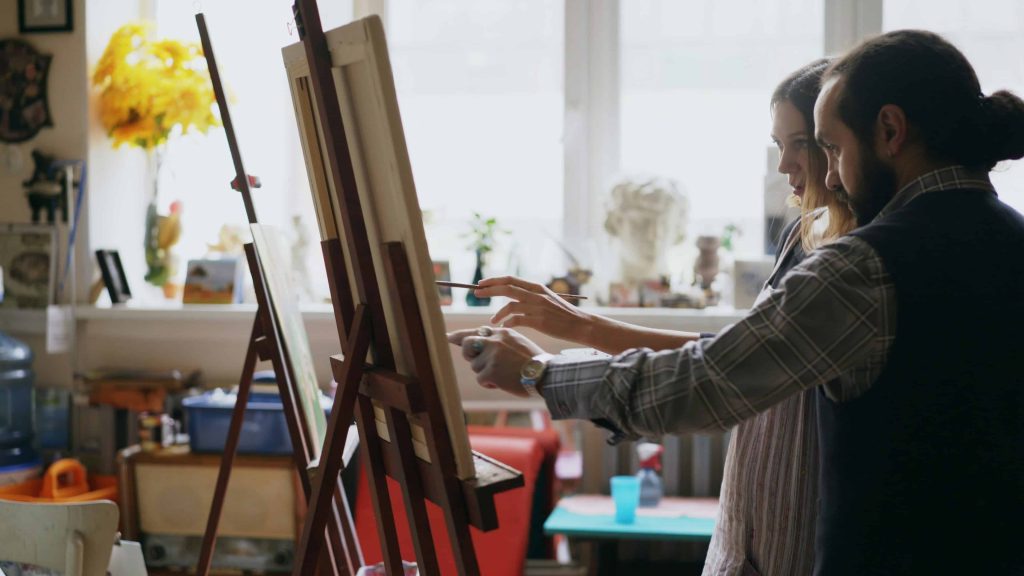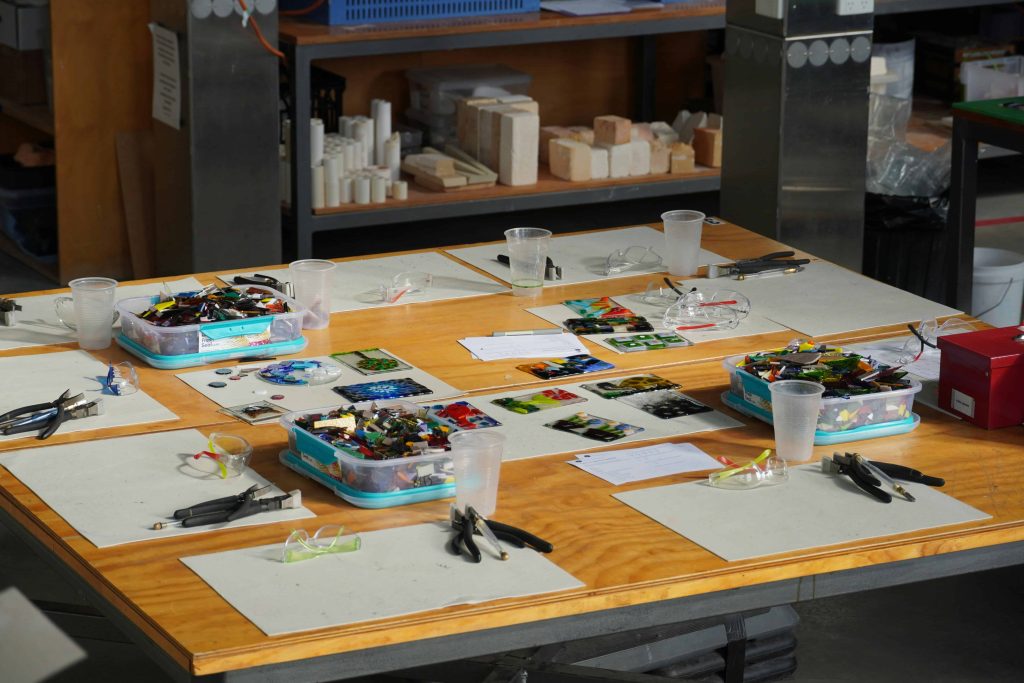
17 Nov The Impact of Art Workshops on Community Engagement and Promotion
Introduction
Art workshops serve as more than just learning spaces; they are dynamic hubs for creativity, dialogue, and community participation. Beyond teaching techniques, promotional art workshops build meaningful connections between artists, organizations, and audiences. These events transform passive spectators into active participants who experience the artistic process firsthand.
Workshops and classes function as dual-purpose platforms — they promote artists and organizations while fostering genuine engagement with local communities. This article explores how art workshops can be used strategically as promotional tools that encourage participation, collaboration, and long-term appreciation of the arts.
Defining the Core Concept: Promotion + Engagement Synergy
What is “Promotional” in this Context?
In the arts, promotion refers to deliberate activities that enhance visibility and awareness. Within workshops, this includes:
- Raising public awareness of a specific artist, art form, or movement.
- Promoting an art organization, gallery, or studio to the community.
- Showcasing techniques or creative processes that attract new participants.
- Building interest in future events, exhibitions, or art programs.
Workshops become organic promotional platforms where attendees experience the artist’s vision and creative method up close.
What is “Community Engagement” in this Context?
- Community engagement focuses on inclusivity, participation, and connection. It involves:
- Making art accessible to people from diverse backgrounds and experience levels.
- Creating opportunities for meaningful interaction between artists and participants.
- Strengthening the community’s connection to local art initiatives.
- Encouraging creative exploration, collaboration, and self-expression.
Engaged participants are more likely to become long-term supporters and advocates for the arts.
The Synergy Between Promotion and Engagement
Promotion and engagement reinforce each other. Effective promotion brings in new audiences, while positive engagement builds trust and loyalty. Workshops demystify artistic practices, helping participants see artists and organizations as approachable and inspiring. This cycle of interaction strengthens both community participation and public awareness.
Strategic Planning: Laying the Foundation for Success
Setting Clear and Measurable Goals
Successful workshops begin with specific goals:
- Promotional Goals: Increasing an artist’s visibility, growing newsletter subscriptions, or expanding social media presence.
- Engagement Goals: Attracting first-time participants, ensuring high satisfaction rates, or diversifying audience demographics.
- All goals should align with the organization’s mission — whether it focuses on education, accessibility, or community development.
Identifying Target Audiences
Knowing who the workshop is for determines its tone and format.
- Demographics: Age, location, skill level, and art interests.
- Psychographics: Motivations such as stress relief, curiosity, or creative fulfillment, and barriers like time, confidence, or cost.
- Tailor content and promotion to fit the audience — for example, young professionals may prefer short, evening workshops, while retirees might appreciate daytime sessions.
Crafting Compelling Content and Format
A workshop’s design determines its success. Choose relevant themes and techniques that connect to your promotional goals. Ensure accessibility by considering various skill levels, time availability, and budgets. Integrate promotional elements naturally — such as artist talks, process demonstrations, or exhibition previews. Formats may include one-time events, multi-session series, or hybrid online options.
Logistics & Execution: Bringing the Workshop to Life
Venue Selection and Setup
The right venue enhances participation. Choose accessible, comfortable spaces with proper lighting and materials. Whether hosted in a gallery, studio, or community hall, the environment should inspire creativity and encourage interaction.
Instructor or Facilitator Selection
Instructors should combine artistic expertise with communication skills. They must understand the workshop’s dual purpose: to educate and to promote the artist or organization. Provide them with a clear briefing to align their teaching with the event’s goals.
Materials, Equipment, and Budgeting
Ensure materials are high quality and readily available. Manage costs effectively by sourcing supplies in bulk or partnering with sponsors. Provide participants with clear material lists and instructions in advance.
Pricing Strategy
Balance affordability and sustainability. Offer free or low-cost options when possible, and consider sliding-scale or pay-what-you-can models to increase inclusivity. Ensure transparency in pricing so participants know where their fees go.
Registration and Communication
A smooth registration process builds trust. Use accessible sign-up systems and send pre-workshop details that include schedules, materials, and guidelines. Maintain friendly communication to enhance participant confidence and excitement.
Marketing & Outreach: Spreading the Word Effectively
Developing a Multi-Channel Marketing Plan
Use a variety of communication platforms to reach diverse audiences:
- Digital: Social media, newsletters, art directories, and websites.
- Traditional: Flyers, posters, local radio, or print publications.
- Collaborative: Partner with schools, libraries, and local businesses for cross-promotion.
Crafting Compelling Messaging
Focus on experience, not just information. Highlight what participants will gain — learning new skills, connecting with artists, or expressing themselves creatively. Include a clear call to action, such as “Register today for an inspiring creative session!”
Leveraging Networks and Partnerships
Encourage artists and instructors to promote the workshop through their personal networks. Build relationships with community organizations or influencers who can help spread awareness. Cross-promotion strengthens credibility and reach.
During the Workshop: Maximizing Engagement & Promotion
Fostering an Inclusive Atmosphere
Begin with a warm welcome and introductions to establish comfort. Icebreakers, collaborative exercises, and open discussions encourage participation and connection.
Facilitating Meaningful Interaction
Encourage dialogue between participants and the instructor. Allow space for questions, experimentation, and feedback. Balance structure with creative freedom to keep energy and enthusiasm high.
Integrating Promotional Elements Seamlessly
Include artist or gallery information naturally within the session. Provide handouts or digital links for participants to explore future exhibitions. Capture photos or short videos (with permission) to document engagement for later promotion.
Post-Workshop Follow-Up: Sustaining Momentum
Immediate Follow-Up
Send thank-you emails and share highlights on social media. Collect feedback through short surveys to measure participant satisfaction and identify improvements.
Building Ongoing Connections
Invite participants to future workshops or exhibitions. Add consenting attendees to your mailing list and maintain communication through newsletters. Creating online groups or forums can help sustain creative connections beyond the event.
Measuring Success
Evaluate both measurable and qualitative outcomes:
- Quantitative: Attendance, new sign-ups, social media engagement, and website traffic.
- Qualitative: Participant feedback, testimonials, and instructor observations. Use this data to refine future workshop strategies and strengthen impact.
Challenges & Considerations
Running workshops comes with challenges such as limited resources, time constraints, and diverse audience needs. Reaching underrepresented groups may require additional outreach or accessibility planning. Balancing promotion with authenticity is essential — workshops should prioritize connection and creativity over hard sales. Long-term impact should always outweigh short-term metrics.
Conclusion
Art workshops are among the most effective tools for connecting artists with their communities. They strengthen visibility, nurture creativity, and inspire shared experiences that last beyond the event. For organizations and artists, investing in workshops means investing in future audiences and cultural vitality.
Strategically designed workshops don’t just promote art — they build community, nurture inclusion, and sustain creative ecosystems that continue to grow long after the final brushstroke.
Key Takeaways
- Promotional art workshops bridge creativity and community engagement. These workshops go beyond teaching artistic techniques—they create inclusive spaces where artists, organizations, and audiences connect through shared creativity and dialogue. Participants become active contributors to the artistic process rather than passive observers.
- Promotion and engagement work best when combined strategically. Successful workshops balance visibility with participation. Effective promotion draws in new audiences, while genuine engagement nurtures trust and long-term support. Together, they strengthen the community’s relationship with the arts and encourage continuous involvement.
- Clear goals and audience understanding drive workshop success. Defining promotional and engagement goals ensures alignment with an organization’s mission. Understanding audience demographics, motivations, and barriers allows facilitators to design workshops that are both accessible and appealing to diverse participants.
- Well-planned logistics enhance participant experience. From venue selection to instructor choice and material preparation, every detail matters. Smooth registration systems, transparent pricing, and accessible locations help create a positive, inclusive environment that encourages creativity and comfort.
- Effective marketing amplifies reach and impact. Multi-channel promotion—combining digital, traditional, and community-based outreach—ensures workshops reach broader audiences. Messaging should focus on participant benefits, emotional connection, and creative fulfillment to inspire sign-ups and engagement.
- Engagement continues during and after the workshop. Inclusive activities, open discussions, and interactive learning strengthen participation. Post-event follow-ups, thank-you messages, and ongoing invitations to future events sustain relationships and transform participants into loyal advocates for the arts.
Continuous evaluation ensures long-term growth. Measuring success through both quantitative data (attendance, engagement rates) and qualitative insights (feedback, testimonials) helps refine future workshops. Prioritizing authentic connections and creative value ensures sustainable impact beyond promotional goals.
FAQs
How can promotional art workshops benefit both artists and communities?
Promotional art workshops offer a mutual exchange — artists gain visibility and recognition, while communities experience accessible and interactive creativity. These workshops help break barriers between creators and participants, nurturing deeper cultural appreciation and inspiring continuous involvement in local art programs and events.
What strategies make art workshops more effective in community engagement?
Effective workshops focus on inclusivity, interactivity, and storytelling. Using varied formats, clear communication, and accessible venues enhances participation. Additionally, integrating artist talks, live demonstrations, and collaborative projects encourages meaningful connections, ensuring that engagement continues even after the workshop concludes.
How can success be measured after hosting an art workshop?
Success can be evaluated through both quantitative and qualitative metrics. Attendance rates, social media engagement, and repeat participation indicate growth, while feedback forms and testimonials provide valuable insights into participant satisfaction, artistic impact, and areas for improvement in future sessions.
Uncover the secrets to maintaining detailed and reliable documentation for your art collection. From cataloging systems to digital databases, this article breaks down the best professional practices that keep collections organized, verifiable, and ready for exhibitions or institutional records.




